Provence lavender fields and rosy Roussillon
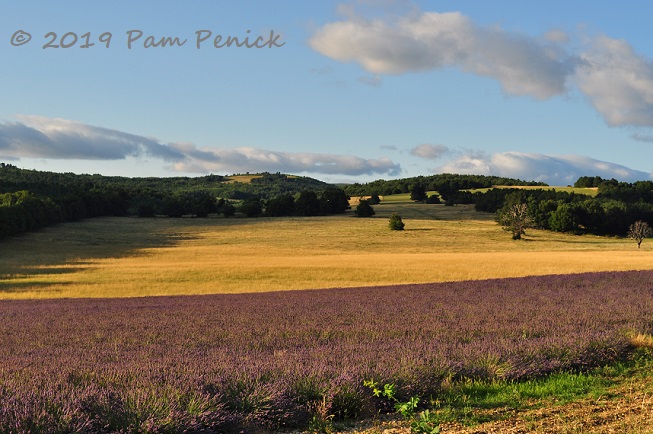
Summer in Provence — what do you think of? Fields of lavender and sunflowers, sun-washed hill towns, buzzing cicadas, hot days and cool nights, a glass of wine at a small table along a cobblestone street? Yes, yes, and yes.
Years after falling for the region’s rugged beauty while watching Jean de Florette, I finally experienced Provence for myself this summer. In late July my husband and I met up with our daughter at the end of her study abroad program in Grenoble, France. In a rental car we headed south into the Luberon, taking back roads that wound through natural parks, crumbling canyons, and farmland valleys, with stunning views around every bend.
Lavender fields
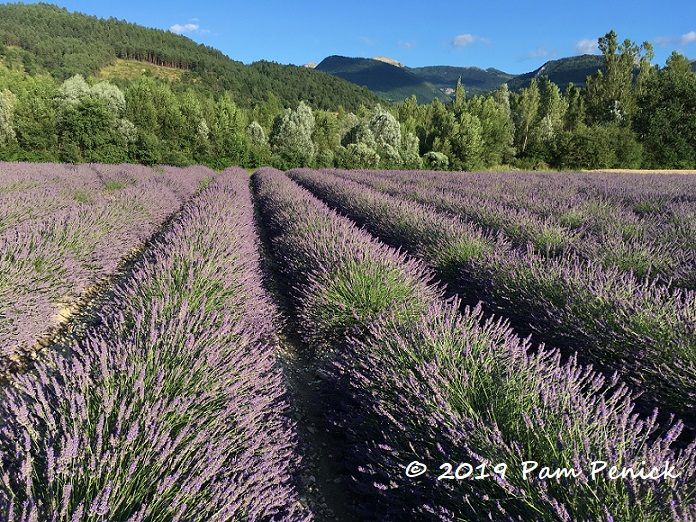
Though most of the region’s lavender fields had already been harvested, we did see a few stunning lavender farms at higher elevations in the northern Luberon.
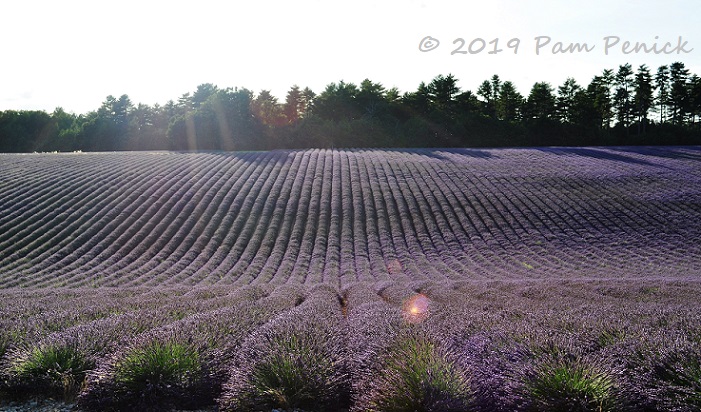
Acres of tubular purple rows sparkled in late afternoon sunlight in one valley.
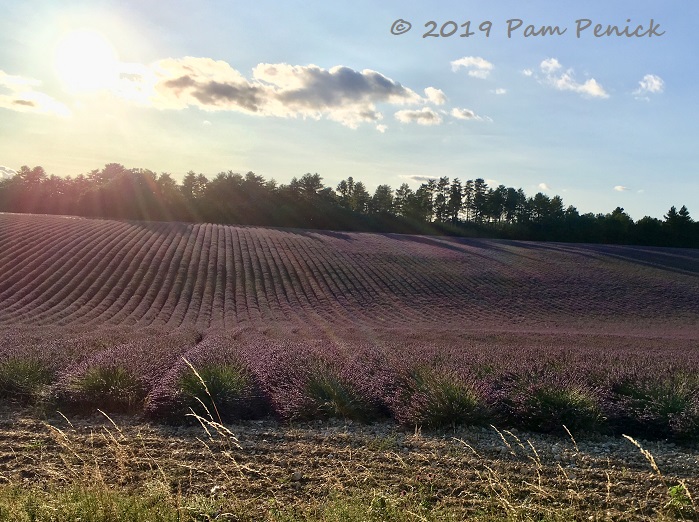
Warm sunshine, low humidity, rocky, dry soil — lavender loves this climate.
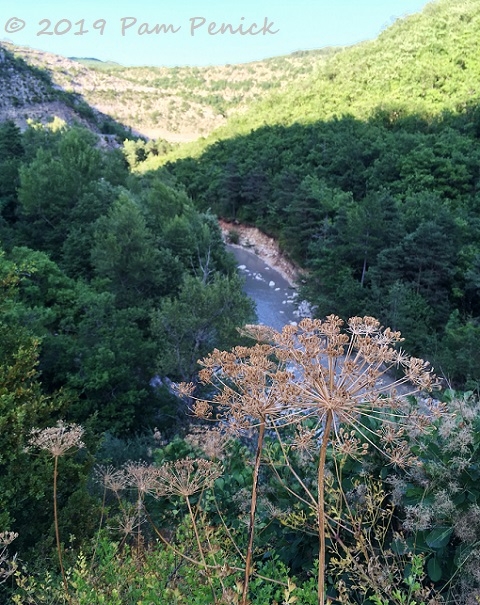
Steep drop-offs took our breath away in one river-carved canyon. I wish I could remember the name of this protected natural area, but I was too busy gripping the steering wheel and exclaiming over the views.
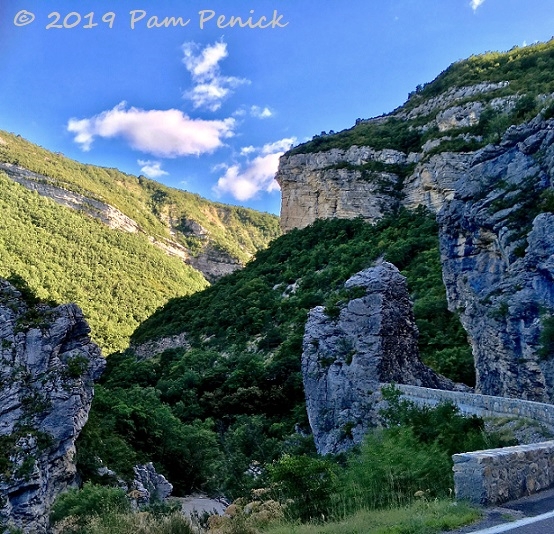
The twisting road hugs cliff ledges and runs through this slot carved through a rocky outcropping. What an adventure it was to drive through this scenic area.
Roussillon en Provence
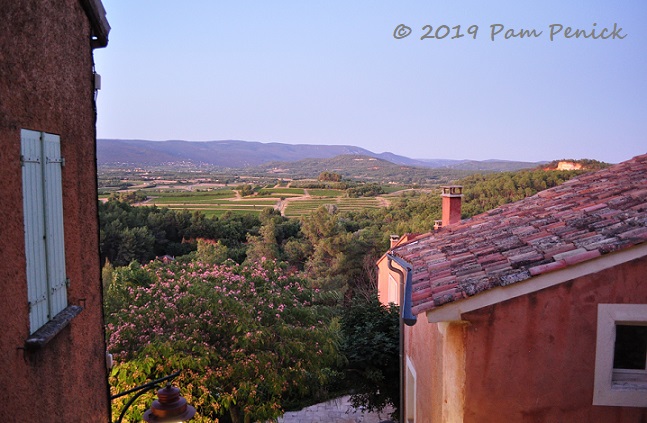
Our home base for five days was Roussillon, an ochre-hued hill town officially dubbed one of the most beautiful villages in France.
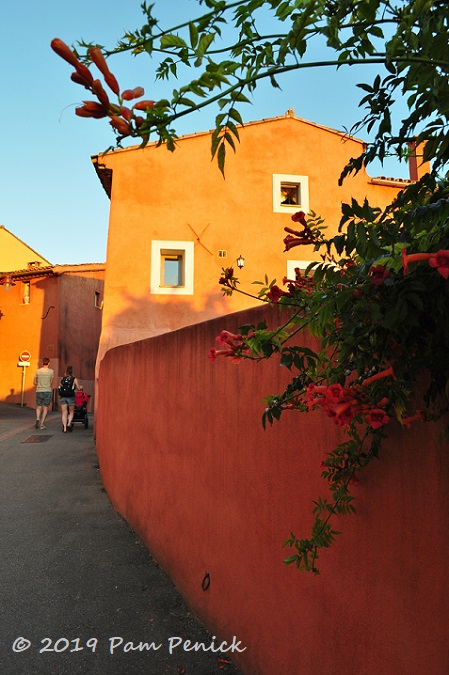
Arriving at sunset, we were smitten by the glowing red- and orange-hued buildings and cliffs of Roussillon, which takes its name from the natural pigment of ochre deposits in the area.
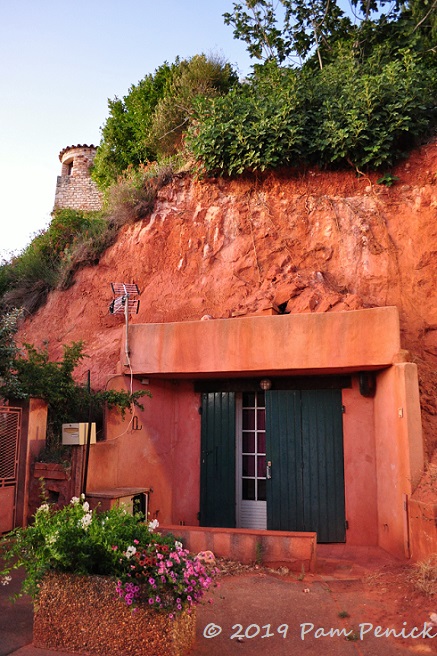
Shipped all over the world for industry and artistic uses, ochre was mined here throughout the 1800s and early 1900s, until world wars and the availability of synthetic dyes finished off the industry. Some of the carved-out cliffs are still in use today, it seems — as living spaces.
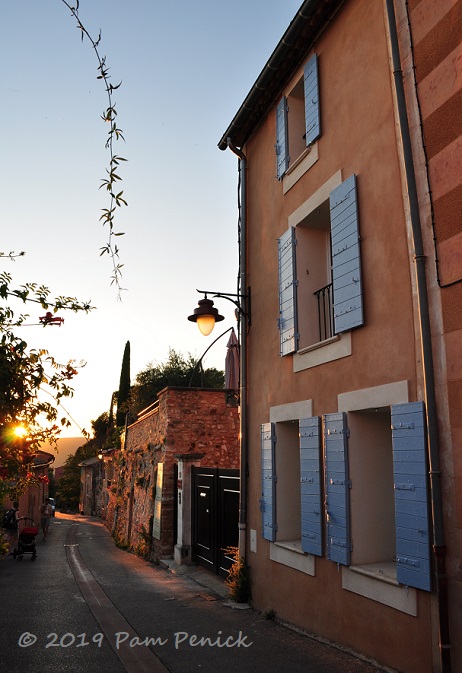
A Roussillon lane at sunset
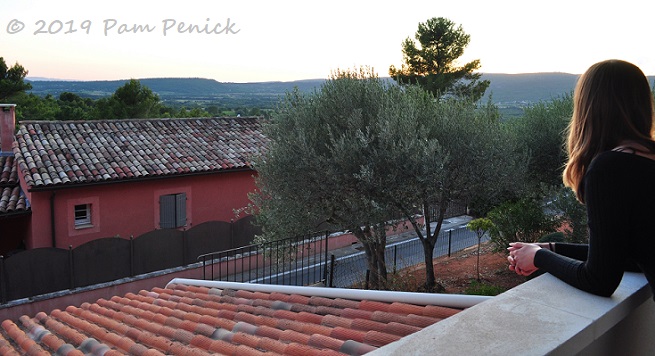
Room with a view
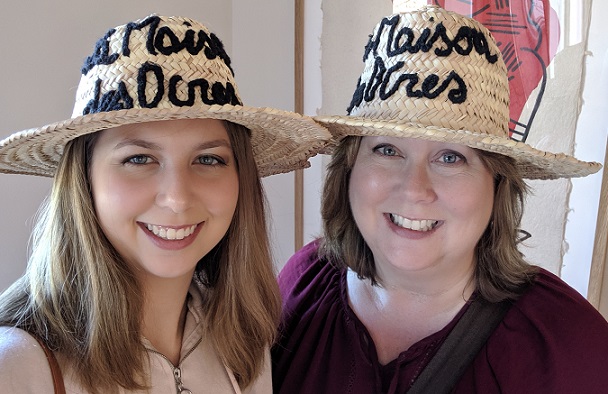
My daughter and I, ready to explore. (The hats were borrowed for the photo. I’d actually brought my own.)
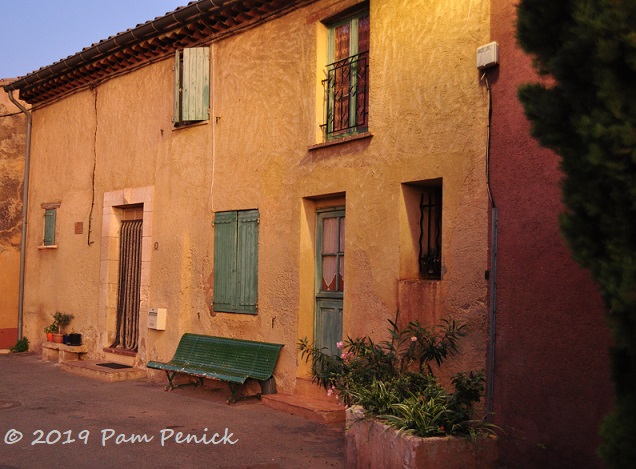
We spent our days driving to other hill towns (Gordes, Bonnieux, Les Baux-de-Provence), Provençal villages on market day (L’Isle-sur-la-Sorgue), cities built around Roman ruins (Avignon, Nimes), and the seaside town of Cassis. But most evenings, back at “home” in Roussillon, we’d stroll the quiet streets now devoid of day-trippers and climb uphill to a small plaza near the church, where a few cafes would open around 7:30 pm for dinner.
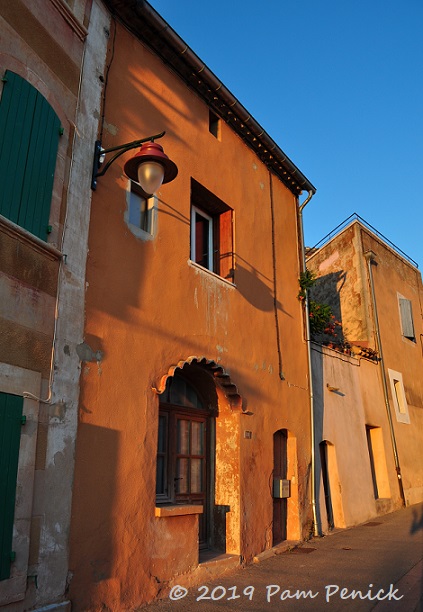
Passing cantaloupe-hued homes with open windows, we’d hear residents making dinner or talking around the table.
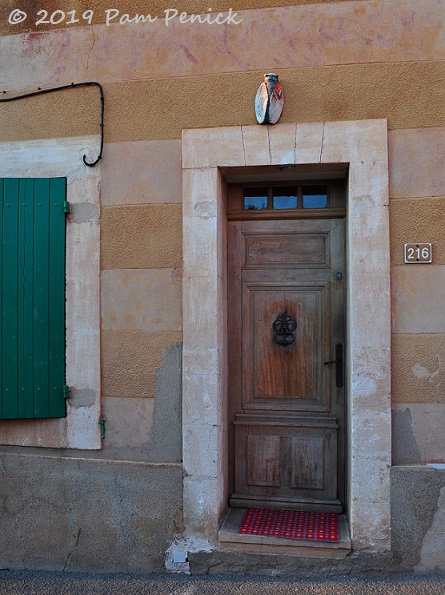
Cicadas, which buzz nonstop through a Provençal summer, are the unofficial mascot of the region. We saw ceramic, metal, and other artistic renditions for sale in markets and shops and adorning homes in every town.
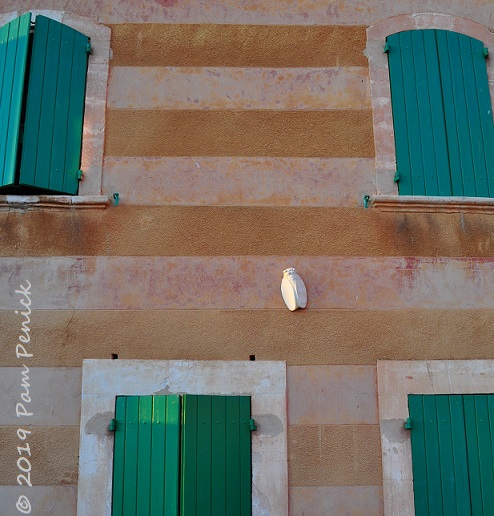
Blue, lavender, and teal shutters, doors, and gates are a decorative signature of the region too.
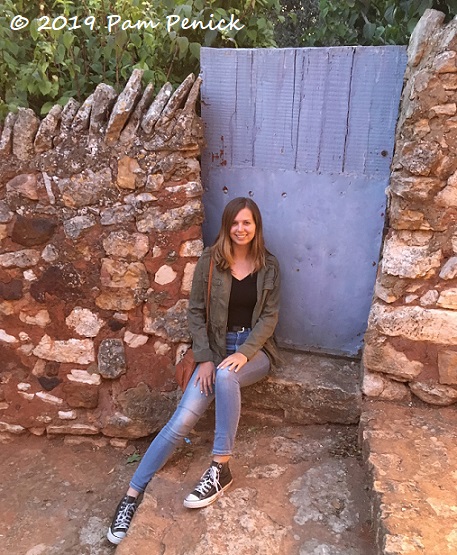
Pastel blue gate against red-mortared stone, a timeless Provençal combo.
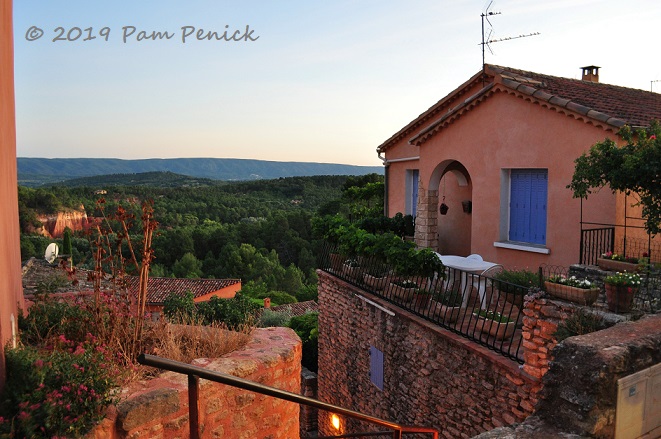
Many of the homes in Roussillon enjoy cliffside views of green hills. Also, did I mention there are a lot of stairs?
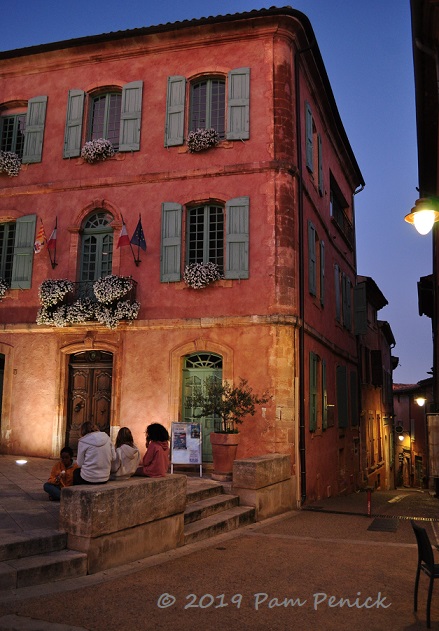
At last you reach the main plaza, where other families and couples relax at cafe tables or on stone benches, surrounded by picturesque red-stucco buildings.
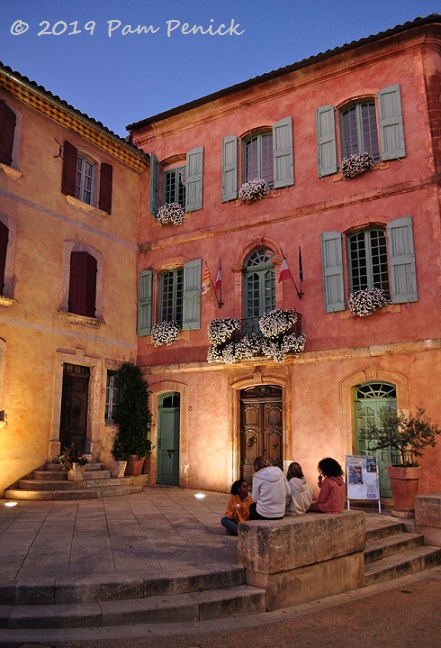
What a romantic place.
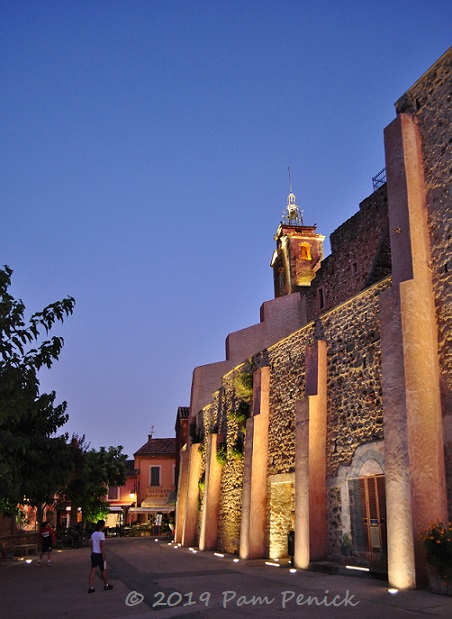
The plaza’s Church of St. Michel dates to the 11th century. It is beautifully lit at night.
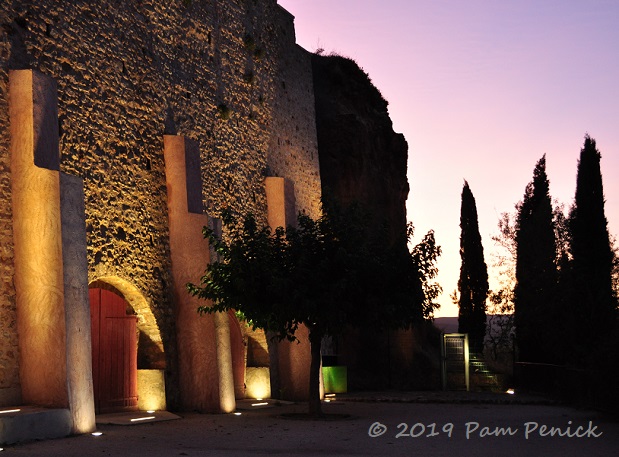
Buttresses echo vertical cypress trees.
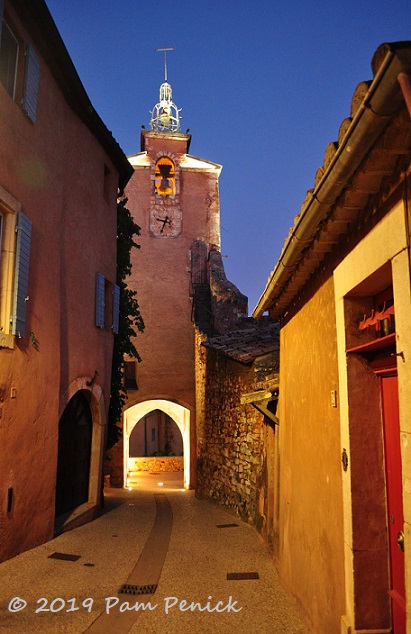
Continuing to climb a bit farther, you pass under the church’s bell tower, where pigeons roost each evening.
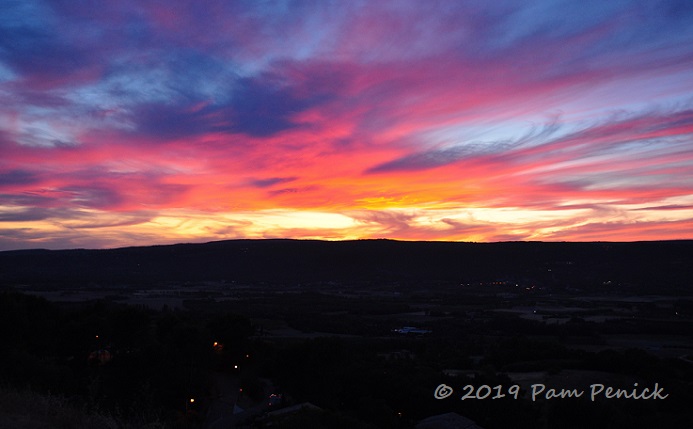
At the highest point in the village, atop Mont Rouge, you discover a majestic view of the rural valley below and perhaps a Crayola sunset.
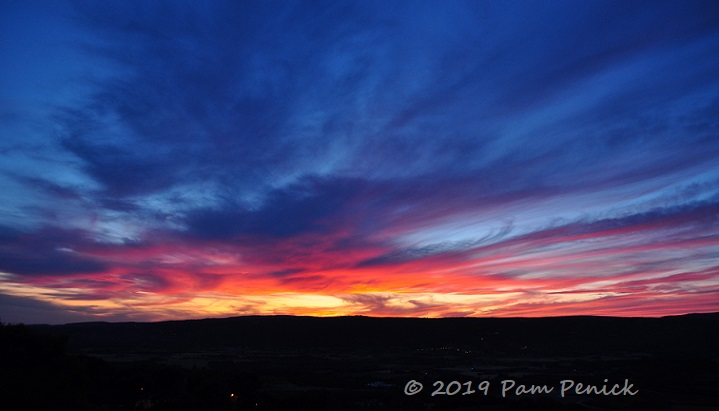
Les Passiflores
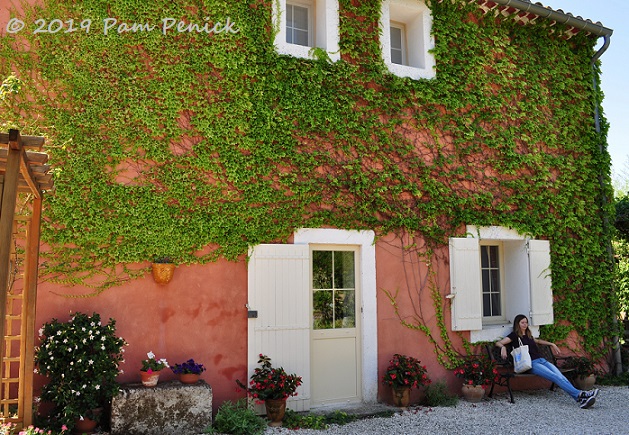
We spent most of our stay at a bed-and-breakfast just outside of Roussillon, in a picturesque hamlet called Huguets. Operated by a welcoming couple, Les Passiflores offers farmhouse charm with ivy-clad red stucco, foot-thick walls, a tile roof, flower pots, and pergola-shaded terrace.
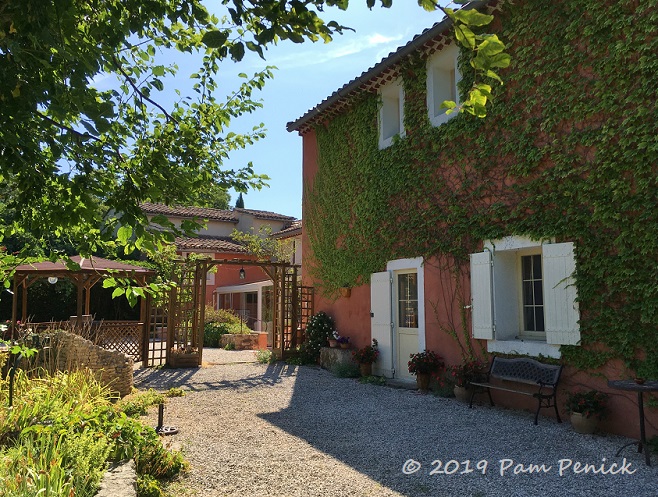
Breakfast varied each day and consisted of selections of the following: fresh baguettes, chocolate croissants, a crock of butter, homemade cherry jam, creamy yogurt, coffee, tea, and fresh-squeezed orange juice. We ate outdoors on the terrace, surrounded by the garden.
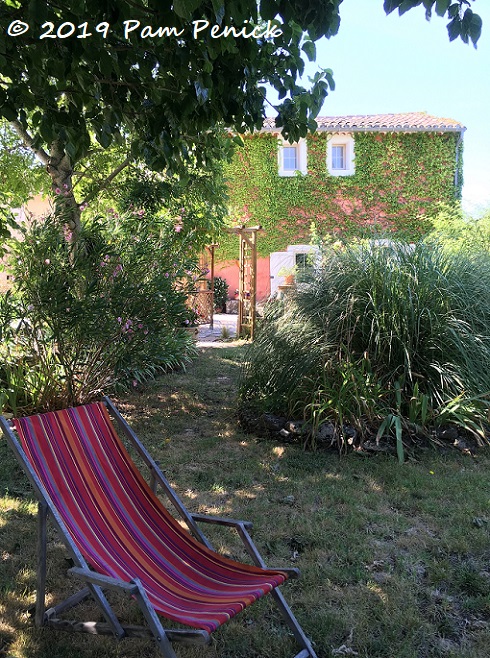
A garden of green foliage enclosing a small lawn and pond invites lingering with colorful canvas chairs.
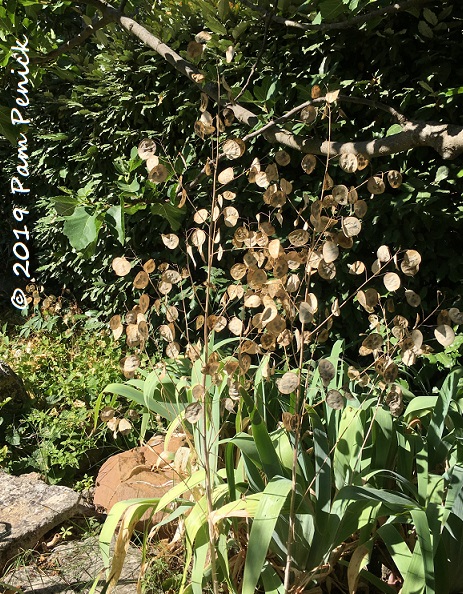
The flowering plants of spring and early summer had gone to seed, but I appreciated the light-catching, disc-shaped seedpods of money plant (Lunaria annua).
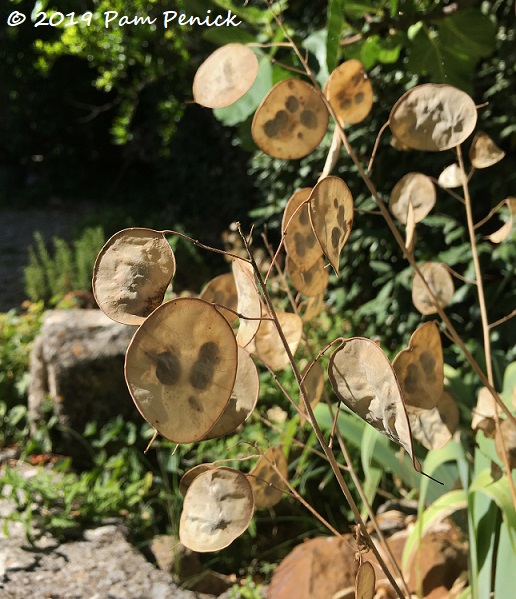
When I asked one of the owners about the garden, he confessed that his husband is the gardener. But he knew this plant as the pope’s money and liked it for use in flower arrangements.
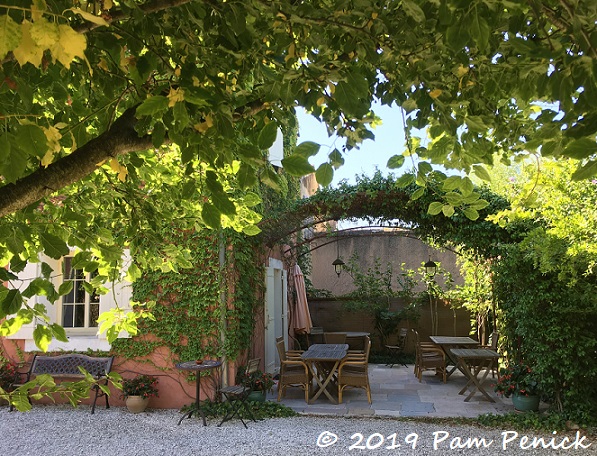
The dining terrace is shaded by an arching, steel-framed pergola cloaked in passionflower vines.
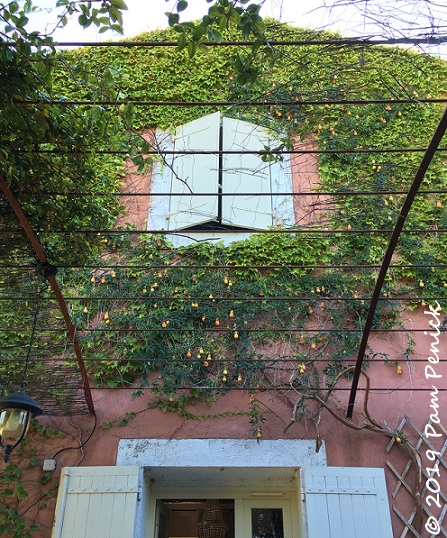
Looking up you see the window to our room — and the orange, dangling fruits of the passionflower!
Up next: Scenes from other beautiful towns we visited in Provence. For a look back at our stopover in London, click here.
__________________________
Digging Deeper
Come learn about gardening and design at Garden Spark! I organize in-person talks by inspiring designers, landscape architects, authors, and gardeners a few times a year in Austin. These are limited-attendance events that sell out quickly, so join the Garden Spark email list to be notified in advance; simply click this link and ask to be added. Season 8 kicks off in fall 2024. Stay tuned for more info!
All material © 2025 by Pam Penick for Digging. Unauthorized reproduction prohibited.


Oh my, it looks like you were there at just the right time. And what a beautiful village, too! The one time we went to Provence we used L-Isle-Sur-La-Sorgue as our base. It was heavenly. I’d like to go back when the lavender is in bloom though.
My sister highly recommended L’Isle-sur-la-Sorgue, and we visited on market day. It’s beautiful and is, I’m sure, a good place to base oneself. We were lucky to catch any lavender in bloom. It normally is harvested before end of July, and this summer’s extreme heat meant many fields were harvested even earlier, or so we were told. The fields we did see were at higher elevations on our drive into the region.
The sunset photos took my breath away! I love everything from the lavender fields to the town shots.
It is such a beautiful part of the world. I’m glad you enjoyed the photos, Kris.
Gorgeous Pam. The French scenery is just stunning. So glad you all had a great time together in such beautiful countryside
We really did enjoy it.
Damn, that’s almost too much beauty to be believed.
It’s kind of hard to take a bad picture there.
Did you drive the Gorge du Verdon? It’s Provence’s version of the Grand Canyon, and it was the scariest drive I ever did.
Oh, how I wanted to. It was at the top of my list of things to do. But we just couldn’t find a good day to make the long drive over there. Next time! My scariest two drives ever were a narrow logging road in northern CA with hairpin turns and huge logging trucks and an above-the-treeline gravel parkway drive in Colorado in pea-soup fog conditions.
Pam, your post brought back many memories of happy times in Provence. When we lived in England, we visited France regularly and stayed at many of the small towns and villages you mention. What a wonderful trip your was, and how fortunate to share it with your husband and daughter. How is her French?
Very good! And better than when she left us to go live there for a month in a host family’s home. 🙂
What fun! Such beautiful settings. I can’t wait to see more.
Thanks, Lisa!
Great photos of a beautiful place! I was there a few years ago and went to the Lavender Museum just outside of some small town whose name I don’t remember. They had a wonderful collection of big copper distilling equipment, some of which were the only remaining examples of their type. Most of them were hundreds of years old but kept quite shiny.
PS. You and your pretty daughter look like the younger and older version of the same person.
The lavender museum sounds like an interesting place. And thank you for the compliment. 🙂
Pam, I am so grateful for your excellent photographic skills; you capture the beauty and the essence of your subjects. Thank you for your work.
Thank you for such a lovely compliment, Nancy! I’m flattered. And thank you for reading Digging. 🙂
Wonderful to see your lovely photos after having been immersed in Modern Design in Provence (Nicole de Vesian’s garden). I love it when the kids pick great places to study! I had a long visit to Europe when Mitch studied at the American University in Paris. Such a fabulous trip, Pam!
Yes indeed. I’ve delicately suggested to her that studying abroad in Australia might be nice. 😉
Lavender fields look beautiful! The same as sunflower fields they are perfect for photo sessions. Near my house there is such place and I see plenty of people coming here and taking photos. I have to confess I was there with my daughter and photos are unbelieveably awesome. I also have lavender in my garden but it is just to decorate it. I have grown it from seed and it compose perfectly with other plants. Again, beautiful photos and thank you for this post!
I saw a few sunflower fields too while I was there but not where I could easily get a photo. With the lavender it makes for beautiful scenery, for sure.